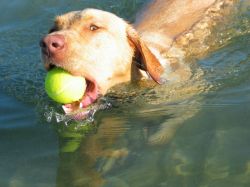
At first glance, puppies appear to be never-ending bundles of energy, so you would think exercising them would be straightforward. Actually, their little bodies are fragile and fatigue quickly, so it is easy to overdo it. Furthermore, before your puppy has completed his or her vaccination cycle (normally around 14-16 weeks), they should avoid playing with other dogs as they might contract illnesses. This means you will need to rely on means besides other dogs to keep your puppy exercised, engaged, and healthy.
Increase exercise duration with age
Very young puppies actually need far less designated exercise than you might imagine. This is because they tire quickly and, as their bones and joints are still soft and developing, they are much more prone to injury. Consequently, pet nutrition experts James Wellbeloved advise using the 5-minutes-of-exercise-per-month-of-age rule when exercising your puppy. This means that for every month your puppy ages, each exercise session can last 5 minutes more. So, a 2-month-old puppy should not exercise for more than 10 minutes at a time. Meanwhile, a 6-month-old can exercise for up to 30 minutes in a single session.
By following this rule, your puppy is less likely to overexert and injure themselves. Eventually, once they reach adulthood (typically 12-18 months), you can dispense with the rule and exercise your dog for longer periods.
Whatever your dog’s age, always give them at least 2 dedicated exercise sessions per day, and take into account their individual capabilities.
Fun ways to exercise your puppy
While puppy exercise is somewhat limited due to the short sessions and need to protect their young bodies, there is still a lot of fun ways you can keep your puppy entertained and fit.
Agility Training
While you should discourage high jumps and sudden weaves and turns, slow movements and jumping over wrist-height bars is a great way to start their agility training early.
Behaviour Training
Start command training as soon as possible to encourage lifetime habits. Just bear in mind young puppies have a short attention spans, so keep lessons brief at the beginning.
Hide-and-seek
Hide toys or food around the room. Your puppy will have fun searching, and it will encourage them to use their nose and memory to track down your favourite hiding spots.
Mental Toys
Toys which involve brainpower don’t just exercise the body but the mind, too. The best example of these are toys with food hidden inside that your puppy has to approach creatively to reach.
And don’t forget, your puppy will always engage in free play, too. Everything is new and everything is a game, so let them explore their surroundings. Just make sure your home is puppy-proofed so they don’t hurt themselves.
Additional Tips
- Ensure fresh water is readily available and that your puppy can rest at any time.
- To protect their young joints, install gates on any stairs and discourage them from jumping on and off furniture.
- If it is hot outside, don’t play for too long and make sure your puppy has access to shade.
- Avoid balls and tug toys which can damage a puppy’s soft teeth.
Most puppies are rarely at risk of under-exercising because they naturally want to play and explore. By keeping in mind that they are still very delicate and need plenty of rest, too, you can balance fun and engaging activities with lots of rest and relaxation time.




